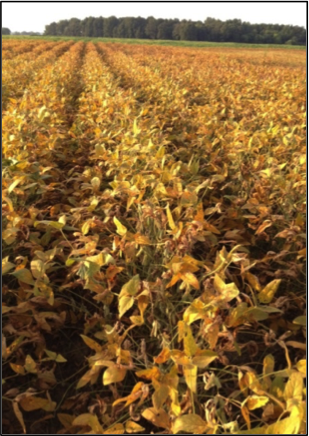Quick Facts | Extended Version | Download Fact Sheet
Soybean rust (SBR), caused by the fungus Phakopsora pachyrhizi, is one of the most important diseases of soybean in several regions around the world. The pathogen was first identified in Asia but later spread to Africa (1997) and South America (2001). The first report of SBR in the continental United States occurred in 2004, most likely brought from South America by the winds of the Hurricane Ivan. It has been proposed that the widespread adoption of soybean as a crop around the world may have contributed in part to this movement. It should be noted that at the end of the 2016 field season, SBR has yet to be detected in Ohio.


